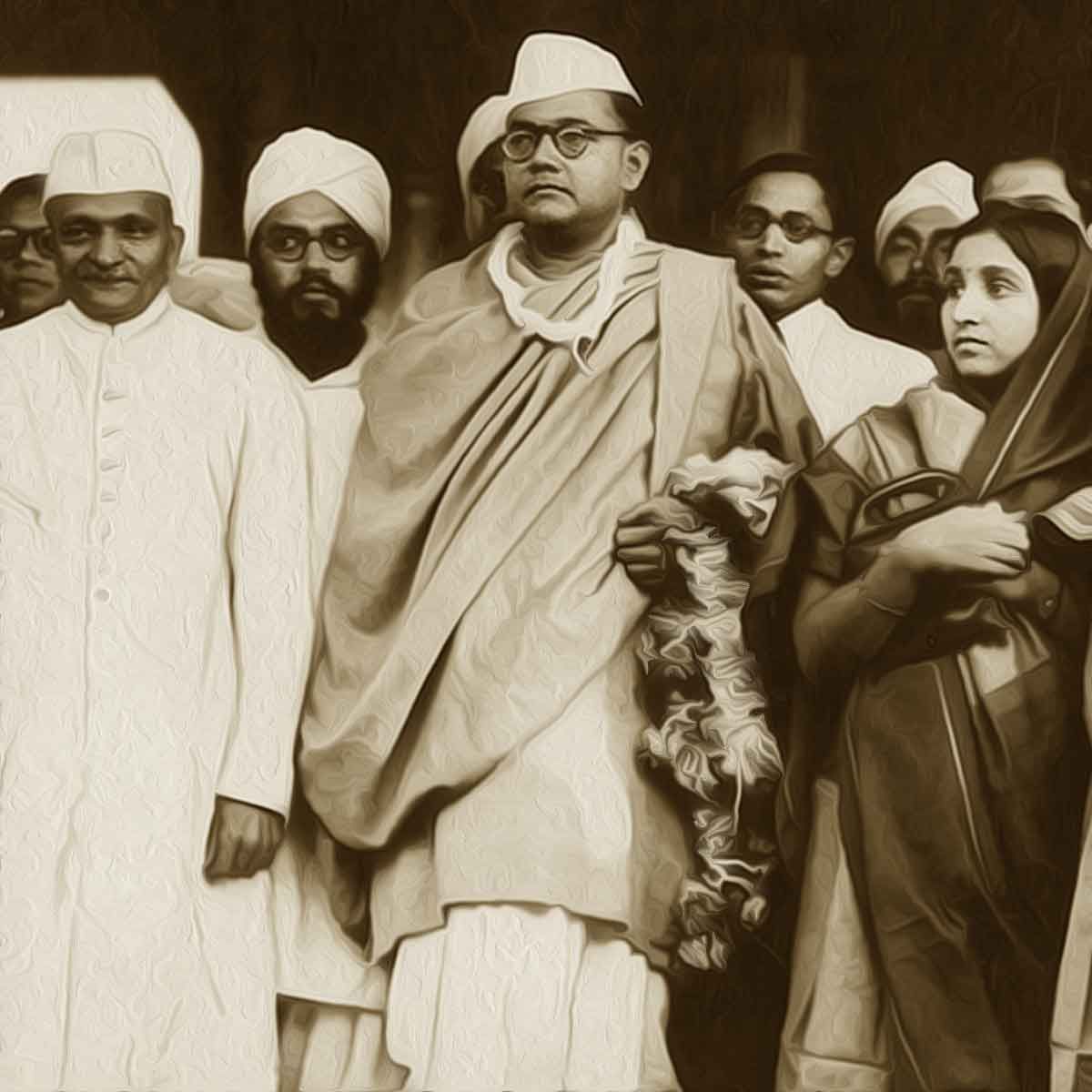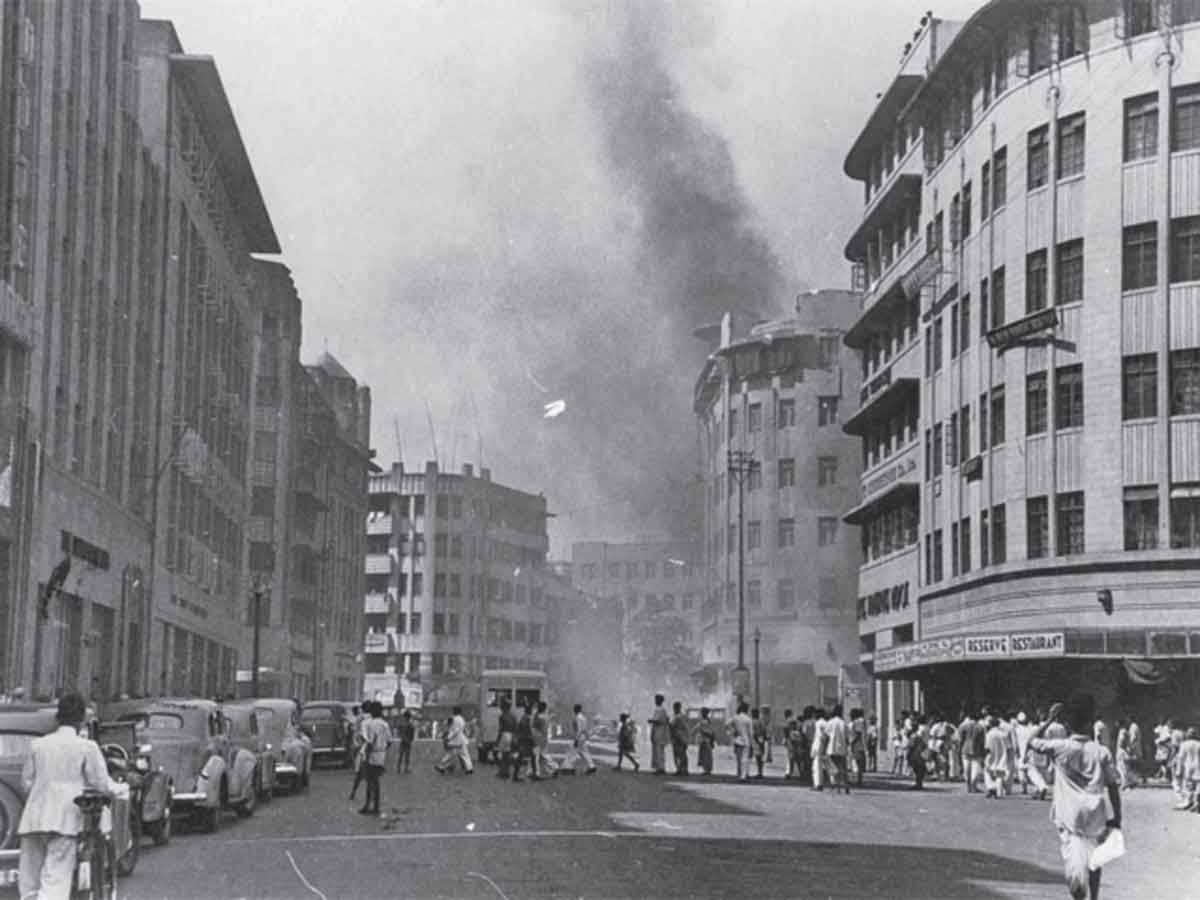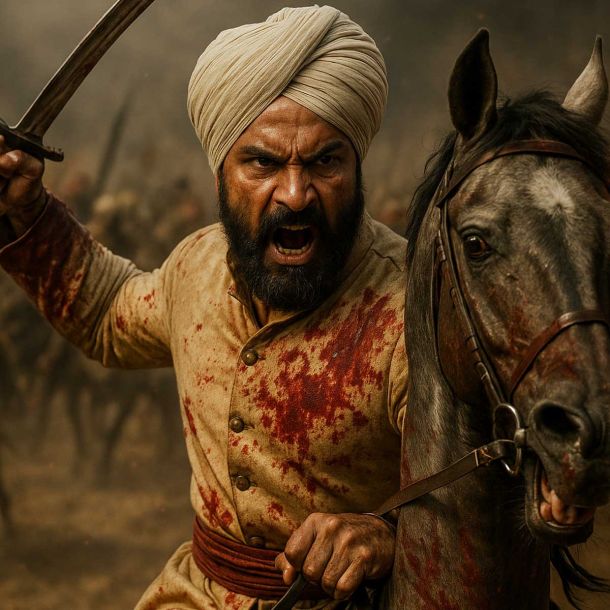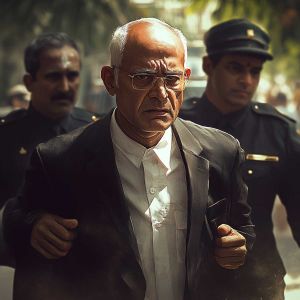Sanatan Articles
Satyaagrah
Written on
Satyaagrah
Written on
Satyaagrah
Written on
Satyaagrah
Written on
Satyaagrah
Written on
JOIN SATYAAGRAH SOCIAL MEDIA
British PM accepted that “the tide of nationalism is running very fast in India" and the mutiny of the Royal Indian Navy in 1946 forced colonial masters Britain to leave India: What followed was betrayal by Congress

While India celebrates its Navy Day today, let’s do a remembrance of The Royal Indian Navy (RIN) Mutiny of 1946 which left colonial masters Britain with no choice but to leave India.
That there is little mention of this momentous event in Indian historiography is a striking indictment of an establishment run by Congress who had turned its back on this spectacular mass uprising in that heady week of February (18-23).
British Prime Minister Clement Attlee accepted three weeks later that “the tide of nationalism is running very fast in India.” Britain had always feared united mass movements in India and RIN Mutiny was one such where Hindus, Muslims, Sikhs, and Parsees had come under one banner. Indian masses came out on the streets in support and hundreds spilled their blood on the street.
Salman Rushdie’s 1995 novel The Moor’s Last Sigh describes these momentous events on the streets of Bombay, through one of its characters, thus:
| “In February 1946, when Bombay, that super epic motion picture of a city, was transformed overnight into a motionless tableau by the great naval and landlubber strikes when ships did not sail, steel was not milled, textile mills neither warped nor woofed, and in the movie studios there was neither turnover nor cut—the 21-year-old Aurora began to zoom around the paralyzed towns in his curtained Buick, directing her driver Hanuman to the heart of the act, or rather of all that great inaction, being set down outside factory gates and dockyards, venturing alone into the slum city of Dharavi, the rum-dens of Dhobi Talao, and the neon fleshpots of Falkland Road, armed only with a folding wooden stool and a sketchbook. Opening them both up, she set about capturing history in charcoal.” |
Remember your history books and historians, your glorified political leaders and their progeny, all your Independence and Republic Day celebrations and after you’ve read of this great betrayal, don’t muffle but air-rend your full-throated cry which sends a shockwave through this land of ours and warn these enemies “Not now and never again.”
And tell your children: “you would read history as it happened and not as it was doctored to your parents.”
 |
World War II had caused RIN to expand massively. It was 10 times larger than in 1939. Young men were enlisted in tens of thousands. Moving around the world, they could see the fire of nationalism against colonialism sweeping around the world. As these young men were hailed as liberators in Greece, Burma, Indo-China, Indonesia, Italy. It was logical they asked themselves: Why not India be free now?
The myth of British supremacy was receding. These young men could see how European forces were wilting across Asia under the Japanese aggression. The Indian National Army (INA) of Subhas Chandra Bose had captured their imagination. The trials of those arrested brethren and their humiliation had filled the natives in armed forces and on streets with revulsion and anger.
In January 1946, the airmen of the Royal Air Force mutinied as a harbinger to the eventually bigger revolt. They seized the signaling equipment and spread their message to other servicemen. From Karachi, the agitation spread to places as far as Kanpur to Singapore. The Navy men were demanding delisting from the services. They were unwilling for fresh battles in Indonesia on behalf of the Dutch government as well as the war in Vietnam, then under the rule of the French colonial government. The hands of the British government were forced.
Meanwhile, trials of INA officers were on at the Red Fort. A young Naval Rating (enlisted officer), Balai Chandra Dutt, posted on HMIS Talwar in Bombay, began painting the ships and dockyard walls with messages in its support. HMIS Talwar had 1500 officers and ratings and was the second-largest training center in the whole of the British Empire. In the recollections, titled “Mutiny of the Innocent”, the mutineers detailed the squalor on board, the poor quality of food, and the racism of British officers.
 |
The mutineers first took out peaceful processions in Bombay, holding an image of Subhash Chandra Bose aloft. Chief Commanding Officer (CO) King called the rebellious “you son of bitches” and “sons of bloody junglees.” Rebels responded by deflating his car. The events of dockyards in Mumbai spread like a wildfire across the country. Ratings set up an INA Relief Fund and posted letters against CO King. On February 17, when the ratings again pressed their demand for good food, British officers called them “beggars.” This was the last straw.
On February 18th morning, 1500 ratings staged a protest in the mess. They also declared: “This is not a mere food riot. We are about the create history…a heritage of pride for free India.” A Naval Central Strike Committee (NCSC) was formed which decided to take over the RIN and place it in the command of national leaders. (That’s right! they wanted India’s political class to be their guide and guardians).
The formal list of demands called for the release of INA’s POWs and naval detainees, withdrawal of troops from Indonesia and Egypt, equal status of pay and allowances, and quality Indian food. It also formally asked the British to quit India.
The strike soon spread to other naval establishments around the country. At its peak, 78 ships, 20 shore establishments, and 20,000 ratings were involved in the uprising. HMS Talwar was coordinating the mutiny through signal communication equipment on its board.
Indian Naval personnel now began offering left-handed salutes to British officers. The orders of British superiors were ignored or defied. In Madras and Poona, the British garrisons faced unrest by the Indian Army. Widespread rioting began from Karachi to Calcutta. The joint banners of INA, Indian National Congress, Muslim League, and Communist Party of India were hoisted on board HMIS Talwar.
Sadly, instead of support, the Indian National Congress condemned their actions. Mahatma Gandhi criticized the mutineers for revolting without any guidance from a political party. The Muslim League too denounced the mutineers, arguing that protests should be through constitutional methods alone.
 |
Sensing that the political leaders were not supporting the uprising, the British government moved in for the kill. Admiral Godfrey tricked NCSC into returning to their respective ships and barracks. Within an hour, Godfrey had the army surround these barracks. Realizing they had been betrayed, NCSC got ready for open battle The NCSC appealed: “You, our people, and our respected political leaders come to our aid…you must support us.”
But the political leaders could sense the dilution of their political authority in this mutiny. Never one consisting of mass leaders and made up mostly of elites, these political leaders had always been uncomfortable in face of a mass uprising. Congress asked the people “to go about their work as usual.”
But the masses were now ready to defy their political leaders. Thousands of civilians brought milk, fruits, bread, vegetables, and cooked food for the starving ratings to the Gateway of India. The ratings came by motorboats to collect the offerings. Hindu, Muslim and Iranian shops opened their eateries and asked the masses to take whatever they could for the suffering ratings. The Indian soldiers on duty didn’t stop them.
The city of Bombay went on strike on February 22. The public transport system was shut down; trains were burnt; roads were blocked; shops were closed. Eleven military trucks were torched. The city came to a grinding halt.
With no assistance from either the Congress or the Muslim League, the mutineers were doomed. British army and air bombers began closing in. At this stage, Congress assured the mutineers that their grievance would be looked into. That they won’t be victimized. Jinnah asked the Muslim ratings to surrender. That sealed the fate of the mutiny.
Meanwhile, Bombay continued to burn the next day, February 23. The Army responded with indiscriminate firing. In just two days, 229 civilians and three policemen had died. Over 1000 people and 91 policemen/soldiers had been injured.
The ratings were court-martialled. More than 500 ratings were kept in Mulund (Bombay) and Maliar (Karachi) in abominable conditions. They were dismissed and later sent home. Only in 1973 did the Indian government recognize a few as freedom fighters. Most claims for pensions were not responded to. Only in the 1990s, two of the navy’s tugboats were named after BC Dutt and Madan Singh.
 |
In 2001, the uprising was commemorated with a statue in Colaba—a recognition which came more than half a century late!
Such is the story of the great betrayal of the Royal Naval Mutiny of 1946 by India’s political leaders. When 100s of ratings suffered in Mulund camp, nobody spoke up for them.
It’s time we pay our respect and homage to those braves who concluded their mutiny with the words:
| “Our strike has been a historic event in the life of our nation. For the first time, the blood of men in the Services and the streets flowed together in a common cause. We in the Services will never forget this. We know also that you, our brothers and sisters, will not forget. Long live our great people. Jai Hind.” |
We would never forget it: And repeat this great event of bravery to our children.
Time to take a vow.
References:
opindia.com - Ashish Shukla
 Support Us
Support Us
Satyagraha was born from the heart of our land, with an undying aim to unveil the true essence of Bharat. It seeks to illuminate the hidden tales of our valiant freedom fighters and the rich chronicles that haven't yet sung their complete melody in the mainstream.
While platforms like NDTV and 'The Wire' effortlessly garner funds under the banner of safeguarding democracy, we at Satyagraha walk a different path. Our strength and resonance come from you. In this journey to weave a stronger Bharat, every little contribution amplifies our voice. Let's come together, contribute as you can, and champion the true spirit of our nation.
 |  |  |
| ICICI Bank of Satyaagrah | Razorpay Bank of Satyaagrah | PayPal Bank of Satyaagrah - For International Payments |
If all above doesn't work, then try the LINK below:
Please share the article on other platforms
DISCLAIMER: The author is solely responsible for the views expressed in this article. The author carries the responsibility for citing and/or licensing of images utilized within the text. The website also frequently uses non-commercial images for representational purposes only in line with the article. We are not responsible for the authenticity of such images. If some images have a copyright issue, we request the person/entity to contact us at satyaagrahindia@gmail.com and we will take the necessary actions to resolve the issue.
Related Articles
- Netaji, an Impossible man can never be boxed into an ideological corner: Not just the most enigmatic figure in world history but his life is also a tough lesson in how to think about history
- Harmonizing Nathuram Godse: Why India should move beyond denouncing him, a man who altered the course of not only the politics of the country but the very history of the Hindu Civilisation and, by extension, the world at large
- Anuj Dhar claims that Subhas Chandra Bose was suspected of being ‘poisoned’ after ouster from the post of Congress president
- Ghost from the past: Unseen picture of Nehru voting in favour of partition of India goes viral
- The untold story of Maharashtrian Brahmin genocide committed by Congress after Gandhi’s assassination in 1948
- During ‘Kheti Bachao Yatra’ in Kurukshetra Shehjada Gandhi claimed of throwing China out from Indian Territory ‘in 15 minutes’: From Nehru’s Himalayan blunder to UPA’s silence as China took over Indian land in Ladakh
- When Nehru ignored warnings from Sardar Patel and Sri Aurobindo and shocked USA President: Chinese Betryal and loss of centuries old ally
- When Secular Nehru Opposed Restoration Of Somnath Temple - The Somnath Temple treachery
- Northeast is not the Part of Pakistan because of 'Netaji': Subhas Bose and the ‘special’ case of Assam
- Nehru's Himalayan Blunders which costed India dearly - Pre-Independence
- If only India’s partition chilling wound was not enough, Gandhi did his last protest again only to blackmail India into giving 55 crores to Pakistan, dragged Hindu, Sikh refugees seeking shelter in mosques to die in cold: And we call him Mahatma, not for
- Birth of our National Anthem: Original recording of 'Jana Gana Mana' performed by the Radio Symphony Orchestra of Hamburg, Germany, 1942 in the presence of Netaji Subhash Chandra Bose
- How Nehru's Govt helped China in conquering Tibet and let go of it's centuries old friend
- Gandhi emphasized that he won't salute Indian National Flag if Charkha is replaced by Ashoka Chakra and wanted British flag added to it
- The perpetrator of the Jallianwala Bagh massacre General Reginald Dyer was forgiven by Mohandas Gandhi as an exercise of forgiveness or love to nurse Dyer back to life if he was suffering from a physical malady





















